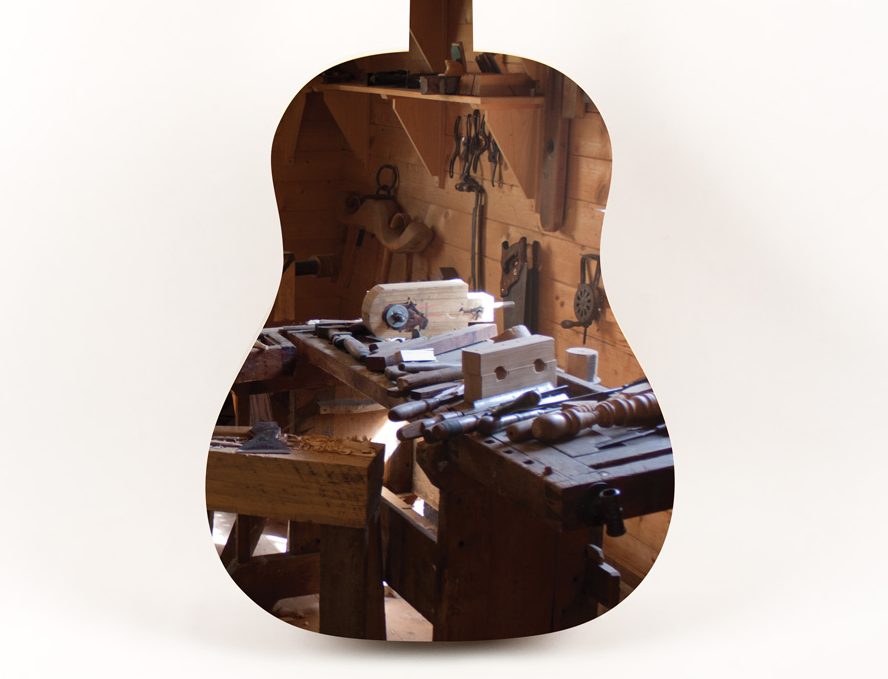The late guitar maker and repair guru Frank Ford did much to raise the bar on Lutherie practices with his deep expertise and generosity of spirit. In the first decade of the 2000s, Ford wrote a Q&A advice column for AG, which armed readers with basic knowledge and tips for troubleshooting and fixing problems with their instruments. The following is an excerpt from the December 2009 issue.

13 Easy Ways to Troubleshoot Your Ax (Credits: Acoustic Guitar Magazine)
Sometimes, it’s the little things that keep you from enjoying your guitar. Here are 13 common problems and their typical solutions.
1. Hard-to-Turn Open-Geared Tuners.
Lubricate all the moving gear parts with light oil, such as 3-in-One.
2. String Suddenly Slips out of Tune.
Make sure the string is securely wrapped at the tuner post. Lap one turn of the string over the others to tighten the windings.
3. Tuneup “Ping.”
Do you hear a “ping” as you tune up, with the string jumping in pitch? It’s not the tuner’s fault—the string is likely binding in the nut slot. Filing the slot smoothly may take care of this, but it is usually a job for a luthier who can do it without lowering the string height too much.
4. High Action in First Position.
If your guitar is hard to fret in the first position but not farther up the fretboard, check the nut-slot height at each string by pressing the string down between the second and third frets. Look closely for clearance at the first fret. There should be just enough space to slip a piece of a phonebook page under the string. Adjustments are made by lowering the individual nut slots, but once again, this is best left to a luthier.
5. Open-String Buzz.
A buzz only in the open position may indicate that your nut is too low, requiring you to either replace or shim the nut. But it could also be caused by a truss rod that’s too tight or a loose first fret that needs to be stabilized and leveled to the plane of the other frets.
6. Muffled Open String.
A string that sounds muffled only in an open position may be sitting in a badly formed nut slot or one contaminated by foreign material. This can usually be fixed by cleaning or recutting the string slot with an appropriately gauged nut file.
7. Buzzing Below Fifth Position.
Are you getting buzzes only in low fret positions, from an open position to the fifth fret? This could be the result of a truss rod that is too tight and causing a “back bow” in the neck, which can easily be corrected with a truss-rod adjustment. Fixing a back bow in an instrument without an adjustable truss rod might require a complete fret replacement and neck leveling.
8. Buzzing Only on Higher Frets.
If your guitar buzzes at frets seven to 12 or so, you may have a combination of a loose truss rod and a low saddle. To correct this, the truss rod should be tightened, and the action raised at the bridge by shimming or replacing the saddle.
9. Buzzes Only on One Fret or in Isolated Areas.
Look for uneven, worn, or loose frets. Correcting uneven frets may be a simple operation, such as leveling and rounding the frets, or it may require a complete re-fret.
10. Poor Intonation.
Compare the pitch of the harmonic at the 12th fret to the fretted note in that position. If they are not the same, your saddle may need more compensation. In extreme cases, the bridge may be mounted incorrectly. Minor intonation difficulties can sometimes be remedied by recontouring the top of the saddle, while serious problems might need to be addressed by relocating the saddle in the bridge or replacing the entire bridge.
11. Buzzing at the Saddle.
The top of the saddle may be too flat. Ideally, each string should contact the top of the saddle at a single point. A flat saddle will cause a light sitar-like buzz up and down the neck. A simple rounding of the saddle top (using fine sandpaper) usually corrects this problem without affecting the playability or action of the guitar.
12. Pickup Distortion.
Replace your pickup’s battery. Marking your calendar for an annual battery replacement can help you avoid this problem in the future.
13. Pickup Doesn’t Work.
The first thing to check is whether a cable has come loose at the output jack. Next, try another cable. They often fail because they are subjected to a lot of bending. And it’s possible the jack itself may need to be replaced if it has broken internally.























